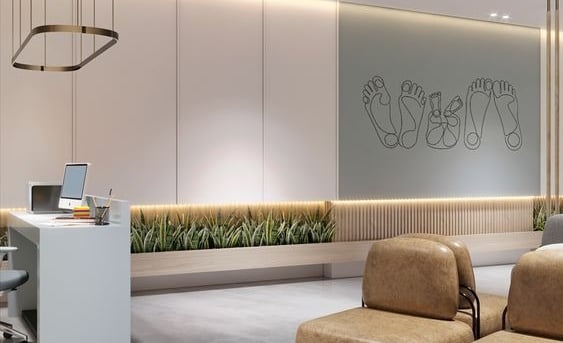The Psychology of Waiting Rooms
The design of a waiting room in a healthcare setting, particularly in dental clinics, can significantly influence patient anxiety and overall experience. Waiting for a dental appointment can be a source of stress for many patients, due to both the anticipation of the visit and the environment of the waiting area itself. Understanding the psychology behind waiting room design can help create spaces that not only reduce anxiety but also promote a sense of calm and comfort. This blog delves into how the design of waiting rooms can impact patient anxiety and provides design tips to foster a tranquil waiting area.
Recognizing the Impact of Waiting Room Design
Designing for Reduced Anxiety
The waiting room is often where the first impression of a dental clinic is formed. It sets the tone for the patient's entire visit and can either escalate or alleviate their anxiety. Factors such as layout, lighting, seating, and even color schemes play crucial roles in influencing a patient's mood and comfort level.
Color Psychology in Waiting Room Design
Colors have a profound impact on our emotions and psychological state. Soft, earthy tones such as greens, blues, and beiges are known for their calming effects and are ideal for waiting room walls and furnishings. Bright colors can be stimulating and might be best used as accents rather than primary colors to avoid overwhelming patients.
Lighting for Comfort and Calm
Natural lighting is a key element in reducing anxiety. Whenever possible, waiting rooms should be designed to allow plenty of natural light, complemented by soft, indirect artificial lighting to maintain a soothing atmosphere during evening hours or in areas with limited natural light. Harsh fluorescent lighting should be avoided as it can contribute to discomfort and anxiety.
Furniture and Layout for Personal Space
The arrangement of furniture in a waiting room should allow for personal space, helping patients feel more secure and less crowded. Chairs should be comfortable and offer variety in seating options, including softer couches for families and more structured chairs for those who may need additional support. The layout should also consider the flow of traffic, ensuring that the space does not feel cluttered or chaotic.
Incorporating Nature and Art
Elements of nature, such as indoor plants, water features, or even artwork depicting natural scenes, can have a tranquilizing effect on patients. These elements not only enhance the aesthetic appeal of the waiting room but also contribute to a more serene and inviting atmosphere.
Engaging Distractions to Ease Wait Times
Providing distractions can significantly reduce perceived wait times and anxiety. This could include access to magazines, books, a television displaying calming scenes or programs, and Wi-Fi for personal device use. For pediatric patients, a small play area or interactive games can make the waiting time less daunting.
The Soundscape of the Waiting Room
The auditory environment of a waiting room can also influence patient anxiety. Soft background music or the sound of a water feature can mask the noise from the treatment areas and create a peaceful ambiance. The choice of music should be deliberate, favoring instrumental or soft, calming genres.
Privacy and Information
Patients value their privacy, and the waiting room should be designed to respect this. The reception area should be positioned to allow discreet conversations between patients and staff. Providing clear information about wait times and clinic procedures can also help reduce anxiety, as uncertainty often exacerbates stress.


Conclusion
The design of a waiting room is not merely about aesthetics; it's a critical component of patient care that directly impacts their psychological well-being. By employing thoughtful design strategies that consider color, lighting, layout, and sensory experiences, dental clinics can create waiting areas that significantly reduce patient anxiety. Such environments not only improve the patient experience but also contribute to a positive perception of the dental practice, enhancing patient satisfaction and loyalty.
